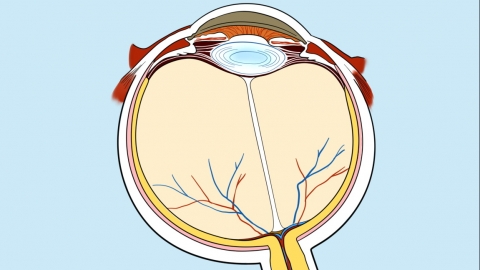What are the differences between amblyopia and myopia in children?
Generally, amblyopia and myopia in children may differ in terms of causes, effectiveness of vision correction, age of onset, treatment methods, and impact on visual function. A detailed analysis is as follows:

1. Causes: Amblyopia often occurs due to factors such as strabismus, anisometropia (significant differences in refractive power between the two eyes), or high refractive errors during the critical period of visual development, which prevent the retina from receiving clear visual stimulation and inhibit the development of visual function. Myopia mainly results from an excessively long axial length of the eye or excessive refractive power of the cornea and lens, causing parallel light rays to focus in front of the retina, resulting in blurred distance vision.
2. Vision Correction Effect: Vision in amblyopia cannot reach normal levels even with appropriate glasses; even if the lens prescription is accurate, visual improvement remains limited. In contrast, with appropriately prescribed glasses, vision correction for myopia can achieve normal or near-normal vision, enabling clear distance vision.
3. Age of Onset: Amblyopia occurs during the critical period of visual development and is usually detected in childhood, especially between ages 3 and 6. If treatment is delayed beyond this period, it becomes significantly more difficult. Myopia can develop during childhood, adolescence, or even adulthood. Adolescents are particularly prone to developing myopia due to factors such as visual habits.
4. Treatment Methods: Amblyopia treatment requires addressing the underlying causes, such as correcting refractive errors, occluding the stronger eye, and performing visual training to stimulate the development of the amblyopic eye. This process usually takes a long time. Myopia treatment primarily involves vision correction through glasses or orthokeratology lenses, along with maintaining healthy visual habits to control myopia progression. Vision training cannot cure myopia.
5. Impact on Visual Function: Amblyopia not only causes reduced visual acuity but is often accompanied by abnormal binocular vision function, such as loss of stereopsis (3D vision), which affects spatial depth perception. Myopia mainly presents as reduced distance vision. If the refractive error is mild and corrected promptly, binocular vision function can generally remain normal, resulting in relatively minimal impact on daily life.
In summary, early intervention is crucial for amblyopia to take advantage of the critical period of visual development. For myopia, scientific vision correction, healthy visual habits, regular vision check-ups, and preventing rapid progression of myopia are essential.





